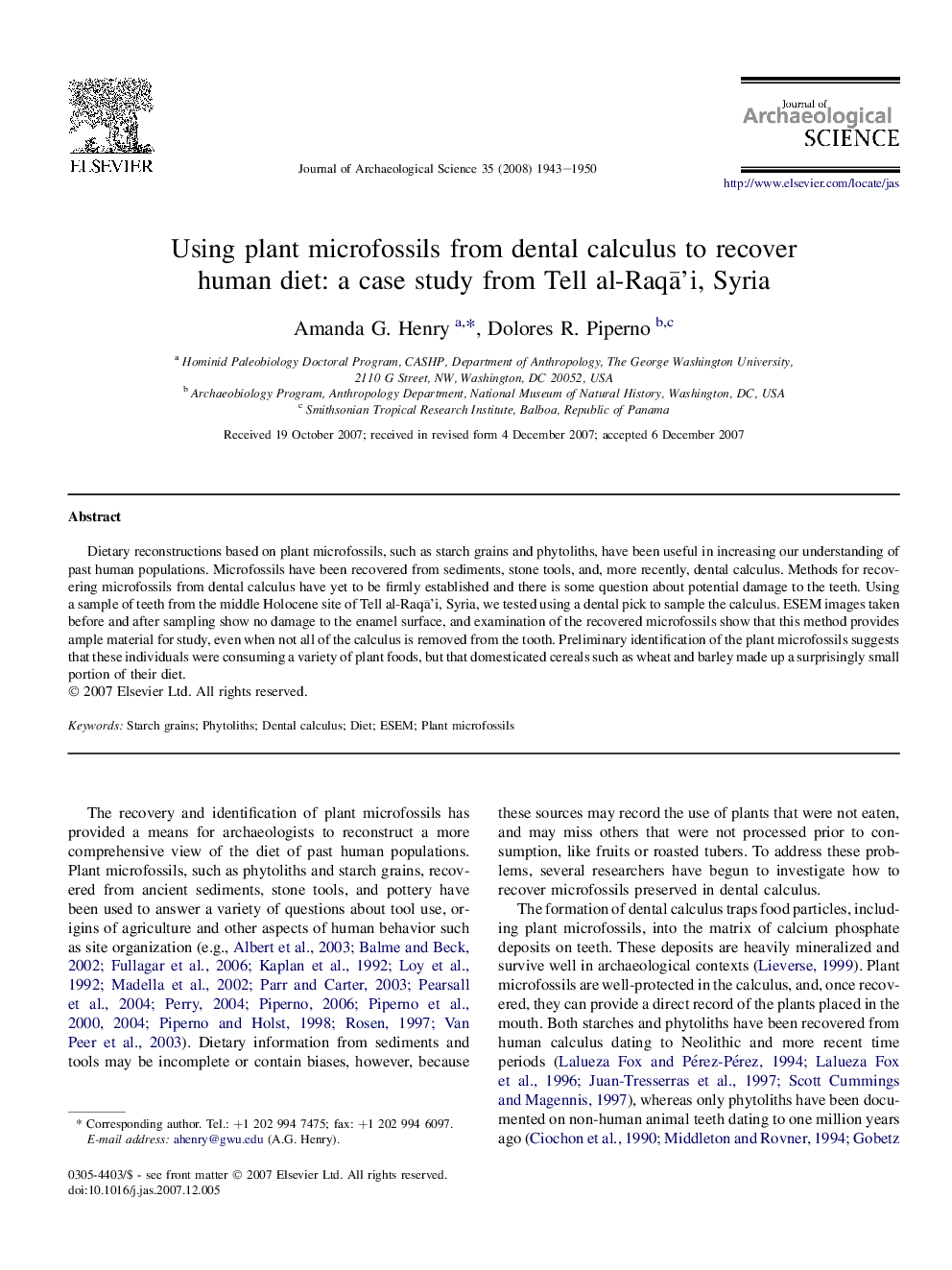| Article ID | Journal | Published Year | Pages | File Type |
|---|---|---|---|---|
| 1037260 | Journal of Archaeological Science | 2008 | 8 Pages |
Dietary reconstructions based on plant microfossils, such as starch grains and phytoliths, have been useful in increasing our understanding of past human populations. Microfossils have been recovered from sediments, stone tools, and, more recently, dental calculus. Methods for recovering microfossils from dental calculus have yet to be firmly established and there is some question about potential damage to the teeth. Using a sample of teeth from the middle Holocene site of Tell al-Raqā'i, Syria, we tested using a dental pick to sample the calculus. ESEM images taken before and after sampling show no damage to the enamel surface, and examination of the recovered microfossils show that this method provides ample material for study, even when not all of the calculus is removed from the tooth. Preliminary identification of the plant microfossils suggests that these individuals were consuming a variety of plant foods, but that domesticated cereals such as wheat and barley made up a surprisingly small portion of their diet.
